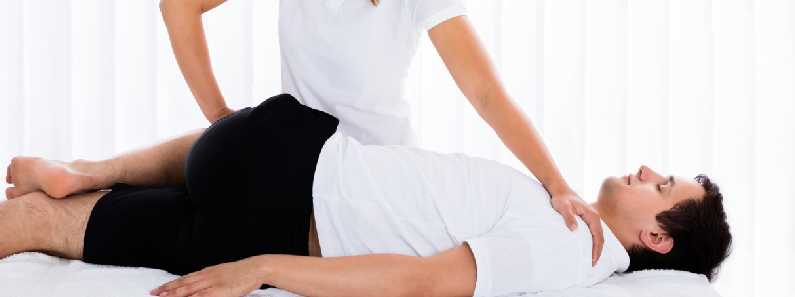The hip joint is the largest joint of the human body. It is necessarily complicated so as to allow a wide range of motion while still supporting the weight of the body. The hip joint resides inside a capsule containing lubricating fluid, which helps the hip move smoothly. Inside the hip joint is cartilage, the tough but flexible substance that lines the ends of joints. Ligaments keep the ball of the joint from slipping out of the socket.
Hip disorders can affect any of these parts, including ligaments and cartilage.
- Osteoarthritis : Degeneration of cartilage in the joint causes osteoarthritis. This makes the cartilage split and become brittle.
- Developmental dysplasia : This condition occurs when a newborn baby has a dislocated hip or a hip that easily dislocates. A shallow hip socket that allows the ball to easily slip in and out is the cause of developmental dysplasia.
- Perthes disease : This disease affects children between the ages of 3 and 11 and results from reduced blood supply to bone cells. This causes some of the bone cells in the femur to die and the bone to lose strength.
- Irritable hip syndrome : Irritable hip syndrome can be common in children after an upper respiratory infection. It causes hip pain that results in limping. In most cases, it resolves by itself.
- Soft tissue pain and referred pain : Pain in the hip may be due to an injury or defect affecting the soft tissues outside of the hip. This is known as referred pain.
- For all forms of arthritis : Joint replacement surgery (hip or knee) may be the best option for people with severe osteoarthritis. Know More
- Rheumatoid arthritis and ankylosing spondylitis : will usually require more complex medical treatment, such as anti-inflammatory medications and disease-modifying medicines.
- Developmental dysplasia of the hip : a special harness is worn for between six and 12 weeks to hold the joint in place while the baby’s skeleton grows and matures.
- Perthes’ disease : options include bed rest, pain-killing medication, a brace or splint (worn for between one and two years to encourage the regrowing femoral head to sit inside the socket) and surgery to treat deformities.
- Slipped capital femoral epiphysis : surgery can reposition the femoral head and screw it firmly into place.
- Irritable hip syndrome : options include bed rest, pain-killing medications and non-steroidal anti-inflammatory drugs (NSAIDs).
- Soft tissue pain : local symptomatic measures such as an exercise program, anti-inflammatory creams and simple pain-relieving medications may help soft tissue pain.
